MDRS Crew 192 Final Science Report (We science the sh*t out of this!)
Richard Blakeman, Executive Officer
April 20, 2018 (Sol 12)
MDRS Crew 192 Mission Science report summary:
This report describes the outcomes of the science and research projects conducted during the MDRS Blue Crew 192 mission. It should be noted that on some of the research studies, the primary data collected requires additional time for analysis and conclusions.
Spacesuit visor fogging study
This research was conducted using a double-blind study to test off the shelf cleaning products (Joy dishwashing liquid and Johnson’s Baby shampoo) and their effectiveness against spacesuit visor fogging. Both one-piece and two-piece (separate helmet) spacesuit configurations were tested along with random controls to identify variables and collect data. The data will require analysis before any final conclusions can be made; however, preliminary data suggests that exertion levels contribute to fogging phenomenon. Additionally, baby shampoo appears to have slightly superior results in fog reduction. There were occasional reports of minor irritation but it appears to be not significant.
Hand exercises using hand relief, well-being balls
This research was conducted as single blind study to test the use of well-being ball for had exercise before EVA determining the dexterity and comfort of hands. After few measurements, discontinued the study as the exercises were creating discomfort for the crew
Crew wellness observations This is survey-based study using the Wellbeing questionnaire before, during and the end of the study to measure the happiness scale of the crew
Crew weight measurements and analysis (EVA) Daily weight measurements were taken along with the pre and post EVA analysis. Preliminary results indicated the weight loss after EVA is proportional with duration of EVA and physical exertion
Crew muscle measurements Daily crew skeletal measurements including deltoid and calf muscles were taken. Preliminary analysis show reduction in deltoid muscle in majority of the crew.
MAG (Maximum Absorbency Garment) utilization (MAG, i.e. Depend-type undergarments) were worn by crewmembers on all EVAs. This provided additional crew comfort, health, welfare, and safety protection on increasingly longer and complex EVAs. NASA and the military use the MAG protocol for missions involving extended operations involving pressure suits, EVA space suit, and undersea hard suits where waste collection issues can significantly impact crew heath and mission success.
Ultrasonic rodent repulsion experiment Three off the shelf plug-in ultrasonic rodent repulsion emitters were placed in the lower habitat, crew quarters deck, and the upper level deck. There was only one intrusion of a rodent during the mission located on the crew living deck near the refrigerator. A trap was baited with a small piece of bread coated with peanut butter and the intruding rodent was captured unharmed. On a subsequent EVA the rodent was released on Galileo Road (Route 1104). An additional rodent intruder was discovered during the night in the south-side, upper level, interface between the wall and the habitat roof structure. The intruder rodent was caught in a glue trap and did not survive. The initial conclusion is that the ultrasonic rodent repulsion emitters are ineffective. Physical traps need to be continuously deployed to capture intruder rodents and additional repulsion technologies tested.
Astronomy discussions and visual observations Conducted night time observational astronomy lectures describing various constellations and planets. The crew was able to observe several satellites and wonder at the incredible view of the heavens above. Additionally, conducted daytime solar observations using the MDRS solar telescope array. However, computer interface issues and some clouds affected viewing. Some imagery was obtained using the optical sun lens and a smart phone.
Geology observations conducted during EVAs Each EVA offered a rich and immersive experience into the local geology. Close physical inspection of structures as well as photographic and video imagery was taken for later discussion and analysis.
EVA touch screen glove testing The crew brought several types of touch pad sensitive gloves to use during EVAs. These proved to be an invaluable tool for the crews as it allowed direct interface with multiple electronic recording devices. Recommend that these be used by future crew to assist with video and photographic imagery.
Water contamination prevention and mitigation procedures
All of the habitat water storage tanks were meticulously cleaned and sanitized over the course of many days to remove any contamination and tank residue; additionally, multiple fresh water transport and loading runs to and from Hanksville was accomplished by the crew. The water transfer pump was also meticulously clean to prevent future contamination. The main water filter was also replaced by the crew.
Yuri’s night distilled spirits experiment The distillation of a celebratory spirit was both a crew morale booster and a fascinating chemistry experiment. The process took several days to complete and the resulting product was equally distributed to each crewmember in a celebratory toast to the accomplishments of Cosmonaut Yuri Gagarin for becoming the first human in space April 12, 1961.
Still and video imagery Still and video imagery has been collected by all crewmembers throughout the mission in order learn and better appreciate the challenges and requirements necessary to be an effective Martian crew.
Spacesuit hydration prototype system operational testing and evaluation An experimental prototype EVA hydration system was constructed and operationally tested on multiple EVAs both mounted and dismounted. This system has shown promising results as it can be utilized while operating a rover, ATV, as well as dismounted EVAs. Astronaut hydration, particularly during heavy exertion, is an important physiological need and critical to crew safety.
Warm Regards from Florida,
Joseph Dituri, PhD (c), CDR, US Navy Saturation Diving Officer (ret)



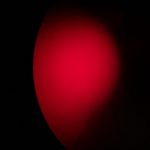
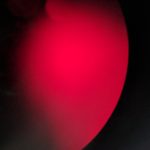
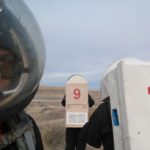
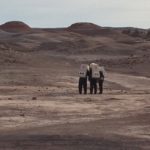
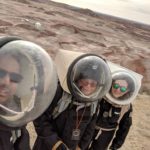
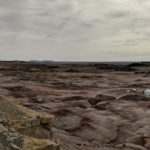
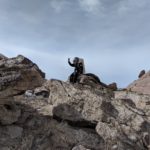

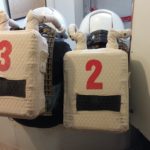
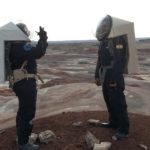
You must be logged in to post a comment.